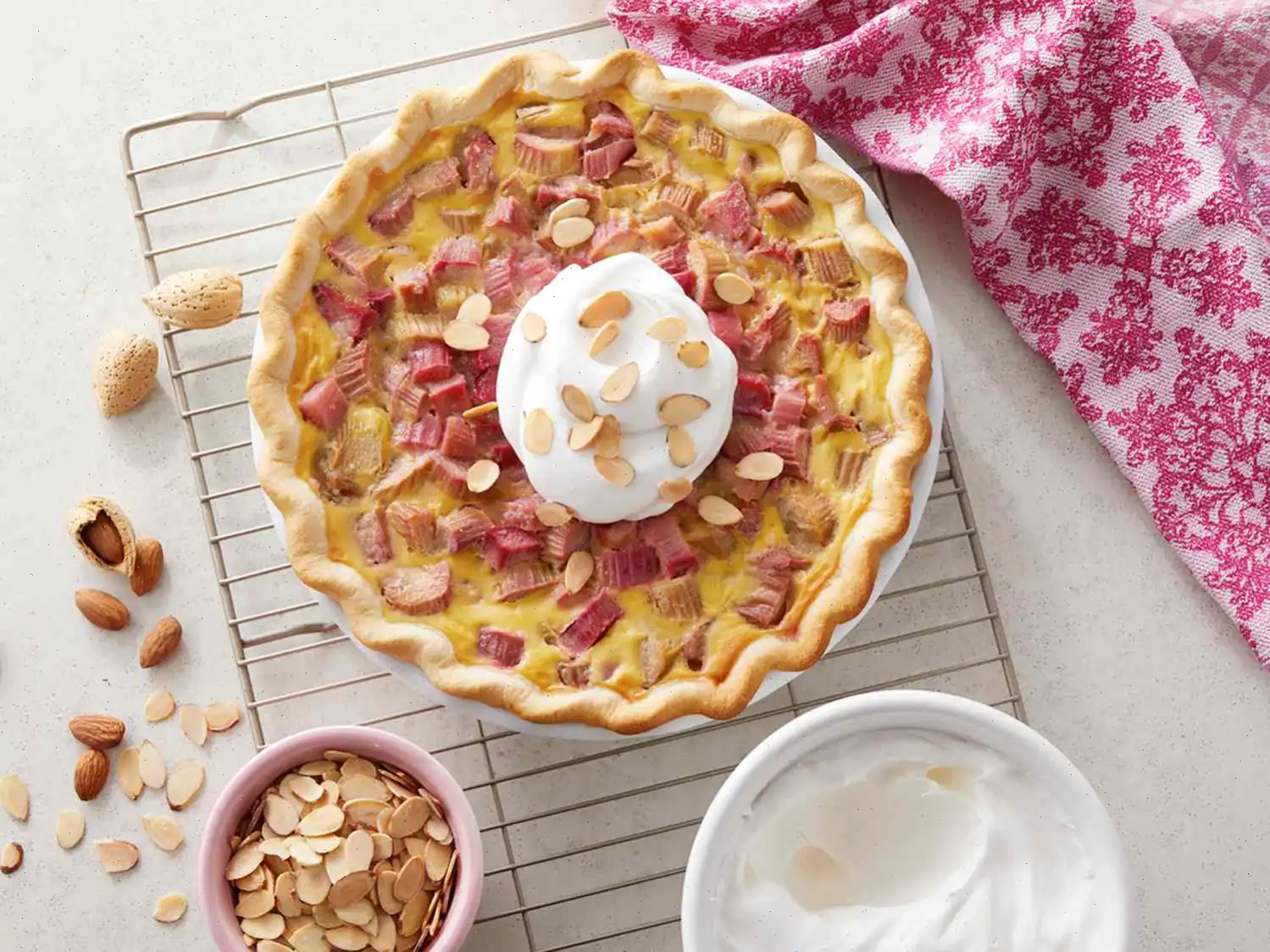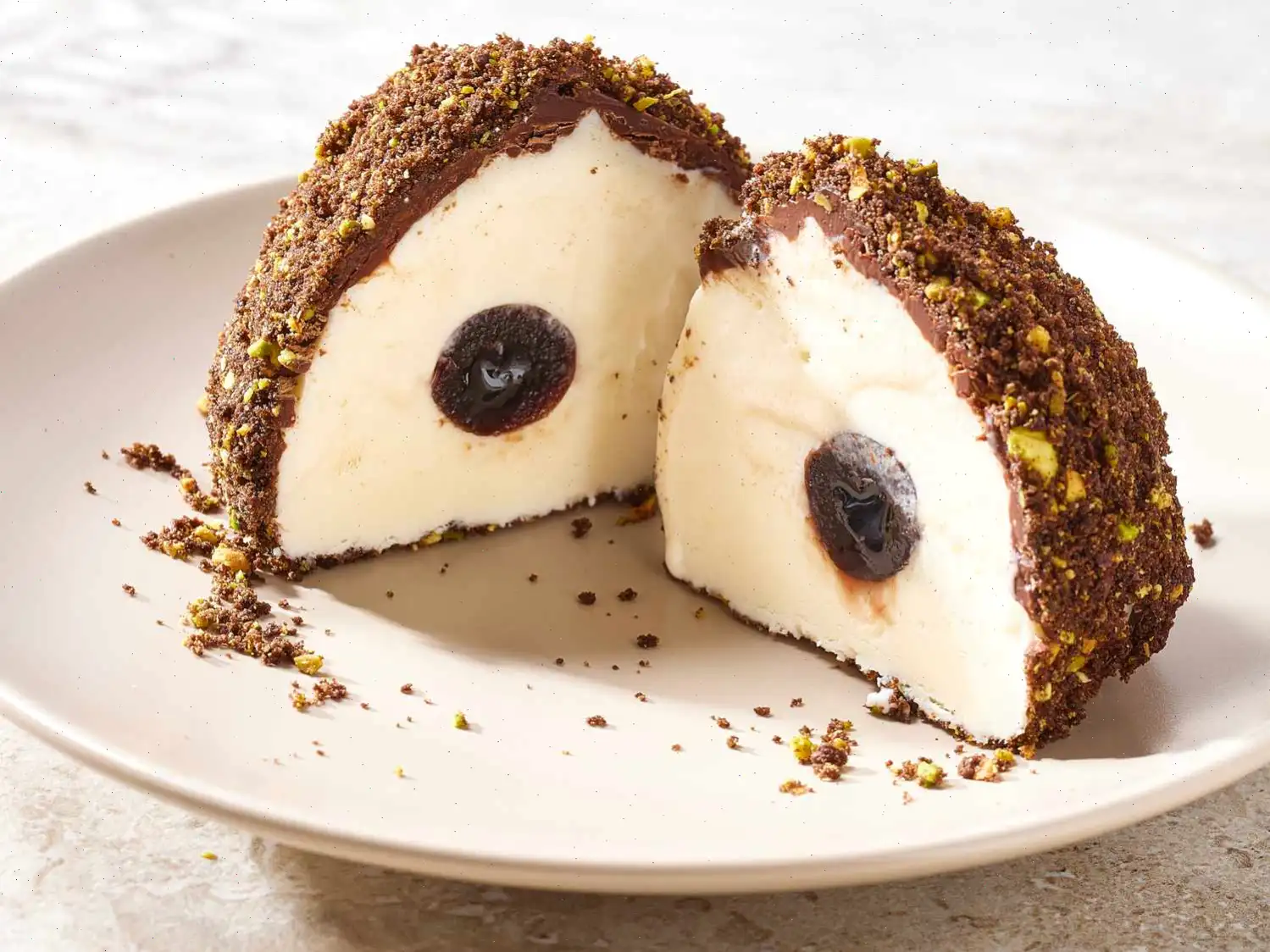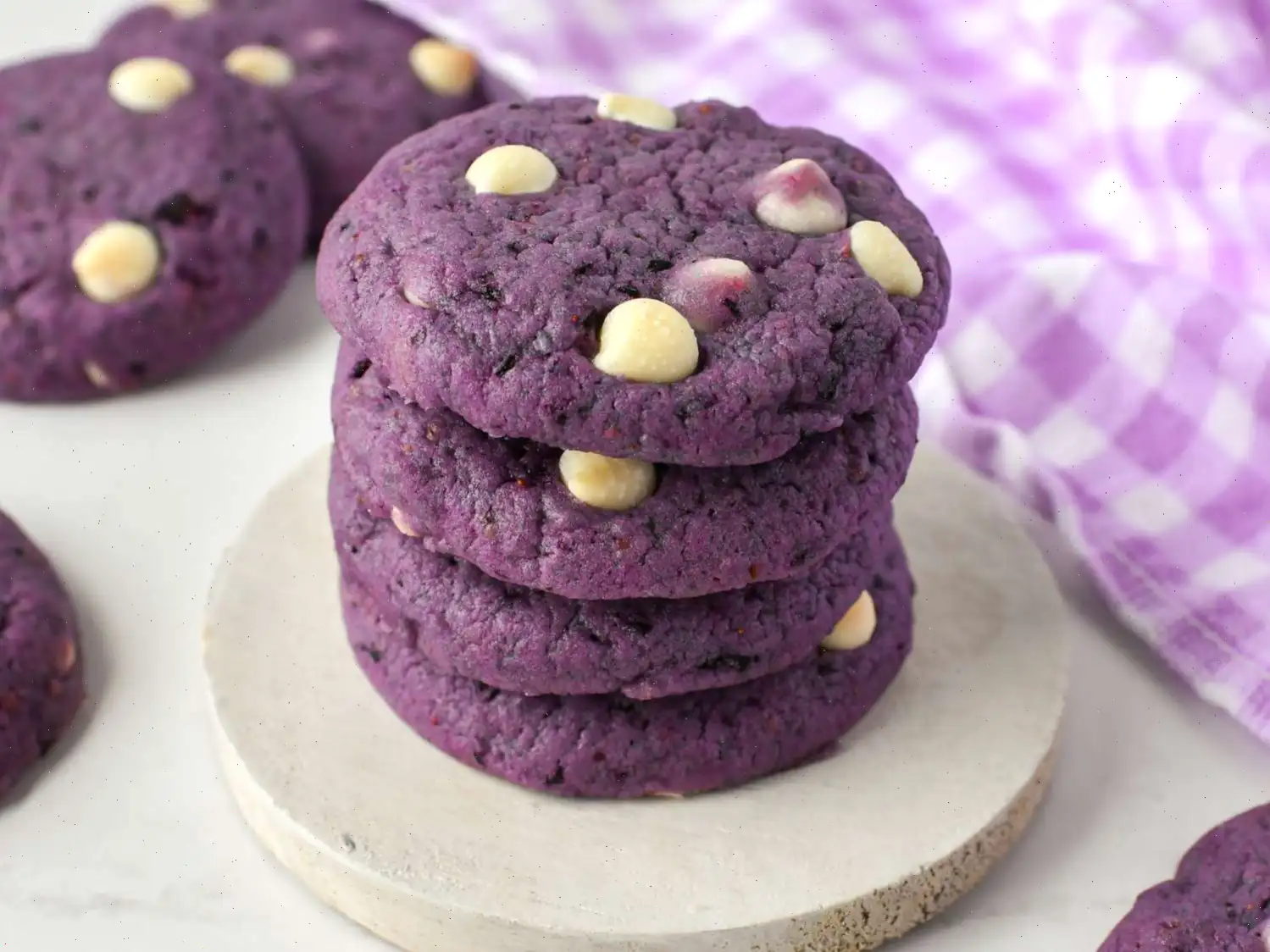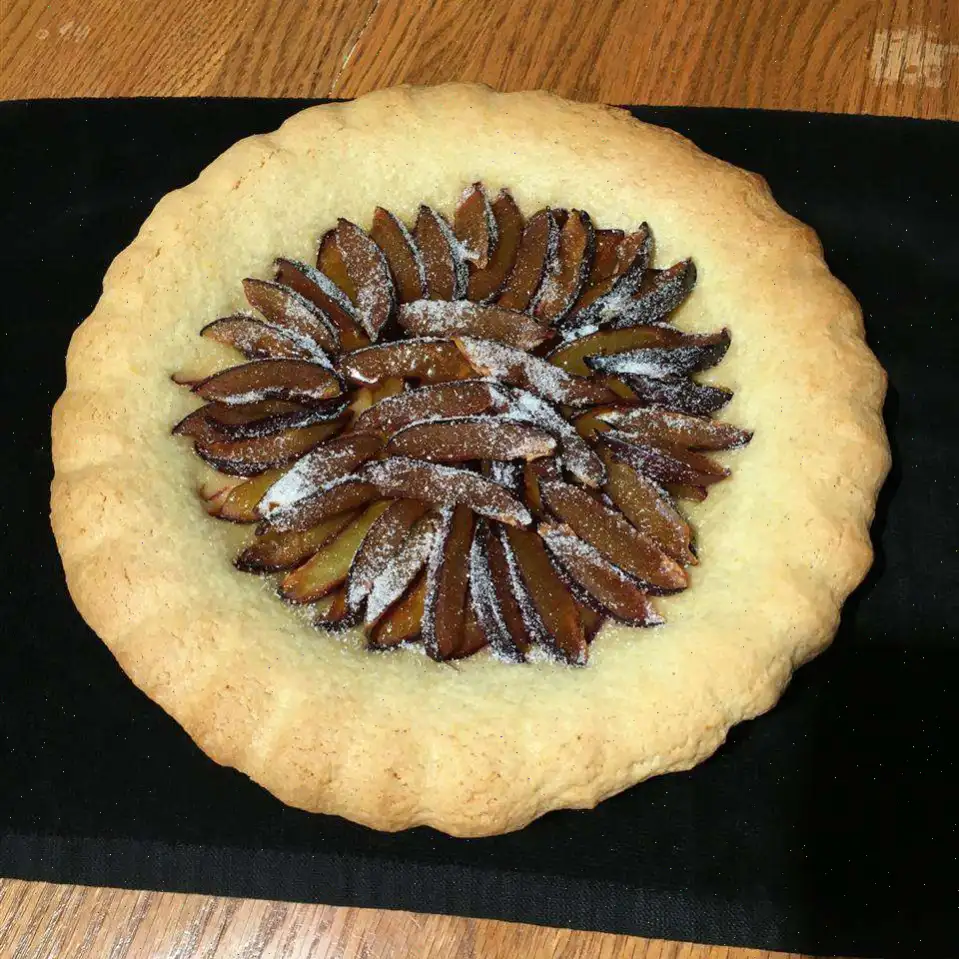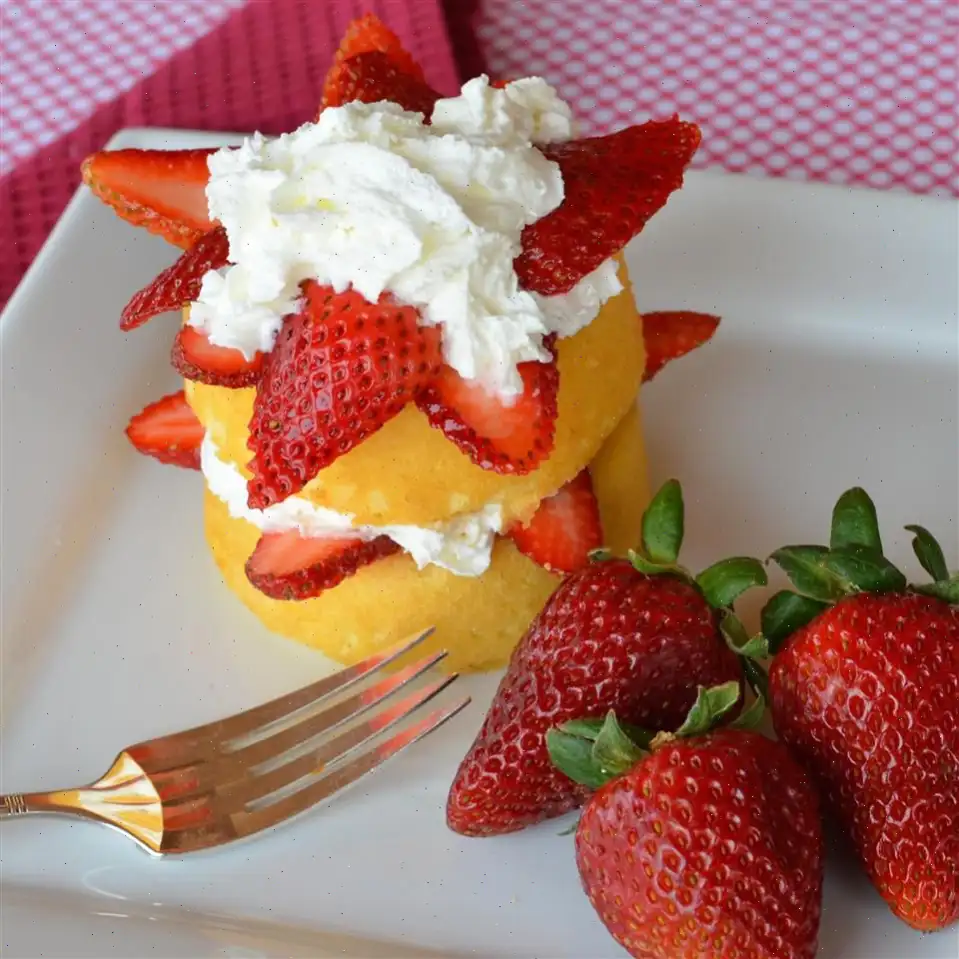
Old Fashioned Rhubarb Pie Recipe
Rhubarb Pie Recipe
This rhubarb pie is a delightful dessert that perfectly combines the tartness of fresh rhubarb with the creamy richness of a custard-like filling. The flaky pie crust adds the finishing touch to this indulgent treat.
Ingredients
- 3/4 cup Almond Breeze Vanilla Almondmilk
- 1/4 cup Blue Diamond Almond Flour
- 1 (9-inch) refrigerated pie crust, at room temperature
- 5 1/2 cups fresh or frozen rhubarb, cut into 1/4-inch pieces (thawed if frozen)
- 1 1/2 cups sugar
- 2 large eggs
- 1/4 teaspoon salt
Directions
Step 1: Preheat the oven to 375F (190C). Roll out the pie crust and place it into a 9-inch pie plate. Crimp the edges of the crust to form a decorative rim.
Step 2: In a large mixing bowl, combine the rhubarb and sugar. Stir the mixture well, ensuring the rhubarb is evenly coated with sugar.
Step 3: Pour the rhubarb and sugar mixture into the prepared pie crust, spreading it evenly.
Step 4: In a separate bowl, whisk together the eggs, Almond Breeze Vanilla Almondmilk, Blue Diamond Almond Flour, and salt until smooth and well combined.
Step 5: Pour the egg mixture over the rhubarb in the pie crust, making sure it covers the rhubarb evenly.
Step 6: Place the pie in the preheated oven and bake for 50 to 55 minutes, or until the filling is set and the crust is golden brown.
Step 7: Allow the pie to cool completely before slicing and serving.
Nutrition Facts (per serving)
| Amount Per Serving | Percentage of Daily Value* |
|---|---|
| Calories | 400 |
| Total Fat | 14g (18%) |
| Saturated Fat | 4g (21%) |
| Cholesterol | 47mg (16%) |
| Sodium | 291mg (13%) |
| Total Carbohydrate | 64g (23%) |
| Dietary Fiber | 3g (11%) |
| Total Sugars | 40g |
| Protein | 6g (11%) |
| Vitamin C | 7mg (7%) |
| Calcium | 145mg (11%) |
| Iron | 2mg (10%) |
| Potassium | 346mg (7%) |
* Percent Daily Values are based on a 2,000 calorie diet. Your daily values may be higher or lower depending on your calorie needs.

History of Rhubarb Pie
Rhubarb pie has been a staple in American kitchens for centuries. Its history dates back to the 18th century when rhubarb, initially valued for its medicinal properties, began to be used in cooking. The plant is native to Asia, but it was brought to Europe in the 1600s, where it quickly became a popular ingredient in pies, jams, and desserts. By the early 19th century, rhubarb made its way to North America, where it gained favor in early colonial kitchens. Rhubarb pie, specifically, became a favorite in the Midwest and New England regions, especially in the spring, when rhubarb was in season.
Regional Features
Rhubarb pie is particularly popular in the northern United States, especially in the Midwest and Northeast. In these regions, rhubarb is one of the first plants to emerge in the spring, making it an ideal ingredient for seasonal pies and desserts. The pies tart, slightly sour flavor contrasts beautifully with the sweet filling, a combination that is beloved in areas with cold climates. Many regional variations include different spices or additional fruits, such as strawberries, to complement the rhubarb. This is particularly common in rural areas, where home bakers experiment with different ingredients to make the most of their local harvests.
How It Differs From Similar Dishes
Rhubarb pie is often compared to fruit pies like apple or cherry pie. However, it stands apart due to its unique tartness. While other fruit pies rely on sweet fruits to create the filling, rhubarb brings a more distinct, tangy flavor to the dessert. The tartness of rhubarb is balanced by large amounts of sugar, but its refreshing acidity makes it more complex than other traditional fruit pies. Unlike apple pie, which often uses cinnamon and nutmeg, rhubarb pie can sometimes incorporate vanilla or almond flavors to enhance its natural tartness.
Where It Is Typically Served
Old fashioned rhubarb pie is a popular dessert at many family gatherings, potlucks, and church events, especially in regions where rhubarb is plentiful. It is also a favorite in small-town diners, where it is often paired with a scoop of vanilla ice cream or a dollop of whipped cream. The pie is commonly served during the spring and summer months, though its place on the dessert table is not limited to any particular season. It's an iconic treat in the Midwest, especially in rural areas, and often features in local fairs and festivals celebrating regional agriculture.
Interesting Facts
- Rhubarb is technically a vegetable, not a fruit, though it is treated as a fruit in culinary uses.
- In the 1940s, during World War II, rhubarb became known as "pie plant" because it was one of the few crops that could be grown in North American gardens during wartime rationing.
- The leaves of the rhubarb plant are toxic if consumed, but the stalks are safe to eat when prepared correctly.
- Rhubarb has been used for medicinal purposes for over 2,000 years, with early cultures using it to treat digestive problems.
- Despite its tartness, rhubarb can be used in savory dishes, sauces, and even soups, though its most famous in desserts like pies and jams.
Whether youre a fan of traditional American desserts or exploring new flavor combinations, this old fashioned rhubarb pie recipe is a perfect way to celebrate the spring season and the history of American baking.
FAQ about Old Fashioned Rhubarb Pie Recipe
Comments
Kelly Smith
11/23/2022 01:07:44 AM
Great recipe!! It was so easy to follow and turned out really well. Thank you! :)
Kelly Hernandez
12/30/2022 01:52:50 AM
I recently tried adding a small can of crushed pineapple, cinnamon, and nutmeg to enhance the apple pie flavor.


